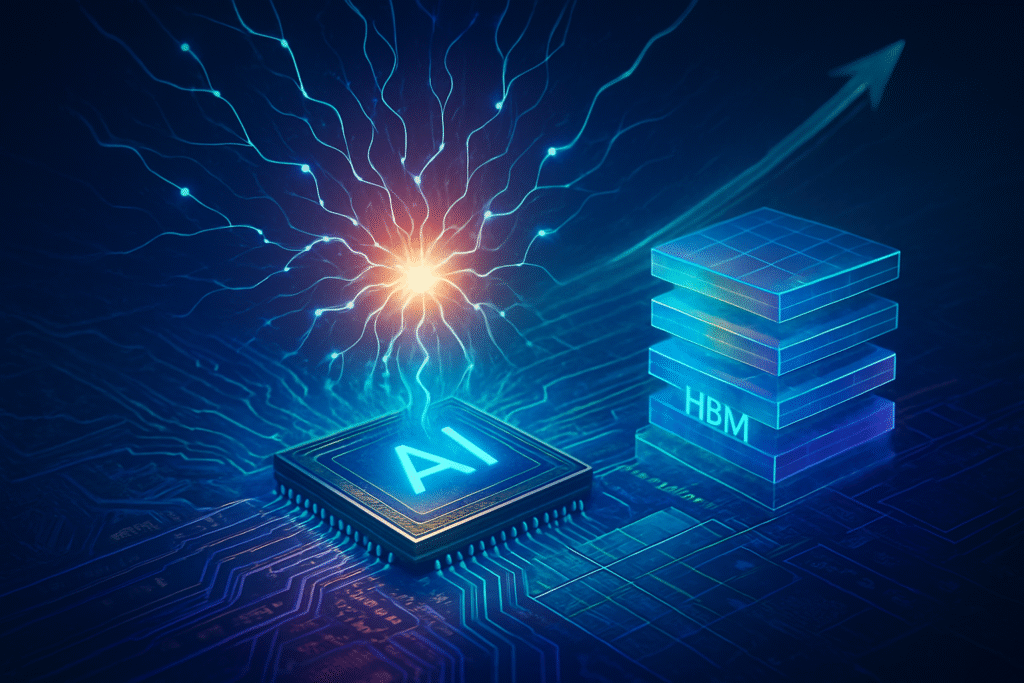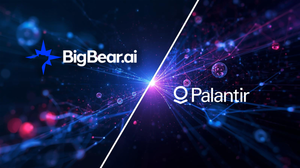
The global semiconductor industry is in the throes of an unprecedented "AI-driven supercycle," a transformative era fundamentally reshaped by the explosive growth of artificial intelligence. As of October 2025, this isn't merely a cyclical upturn but a structural shift, propelling the market towards a projected $1 trillion valuation by 2030, with AI chips alone expected to generate over $150 billion in sales this year. At the heart of this revolution is the surging demand for specialized AI semiconductor solutions, most notably High Bandwidth Memory (HBM), and a fierce global competition for top-tier engineering talent in design and R&D.
This supercycle is characterized by an insatiable need for computational power to fuel generative AI, large language models, and the expansion of hyperscale data centers. Memory giants like SK Hynix (KRX: 000660) and Samsung Electronics (KRX: 005930) are at the forefront, aggressively expanding their hiring and investing billions to dominate the HBM market, which is projected to nearly double in revenue in 2025 to approximately $34 billion. Their strategic moves underscore a broader industry scramble to meet the relentless demands of an AI-first world, from advanced chip design to innovative packaging technologies.
The Technical Backbone of the AI Revolution: HBM and Advanced Silicon
The core of the AI supercycle's technical demands lies in overcoming the "memory wall" bottleneck, where traditional memory architectures struggle to keep pace with the exponential processing power of modern AI accelerators. High Bandwidth Memory (HBM) is the critical enabler, designed specifically for parallel processing in High-Performance Computing (HPC) and AI workloads. Its stacked die architecture and wide interface allow it to handle multiple memory requests simultaneously, delivering significantly higher bandwidth than conventional DRAM—a crucial advantage for GPUs and other AI accelerators that process massive datasets.
The industry is rapidly advancing through HBM generations. While HBM3 and HBM3E are widely adopted, the market is eagerly anticipating the launch of HBM4 in late 2025, promising even higher capacity and a significant improvement in power efficiency, potentially offering 10Gbps speeds and a 40% boost over HBM3. Looking further ahead, HBM4E is targeted for 2027. To facilitate these advancements, JEDEC has confirmed a relaxation to 775 µm stack height to accommodate higher stack configurations, such as 12-hi. These continuous innovations ensure that memory bandwidth keeps pace with the ever-increasing computational requirements of AI models.
Beyond HBM, the demand for a spectrum of AI-optimized semiconductor solutions is skyrocketing. Graphics Processing Units (GPUs) and Application-Specific Integrated Circuits (ASICs) remain indispensable, with the AI accelerator market projected to grow from $20.95 billion in 2025 to $53.23 billion in 2029. Companies like Nvidia (NASDAQ: NVDA), with its A100, H100, and new Blackwell architecture GPUs, continue to lead, but specialized Neural Processing Units (NPUs) are also gaining traction, becoming standard components in next-generation smartphones, laptops, and IoT devices for efficient on-device AI processing.
Crucially, advanced packaging techniques are transforming chip architecture, enabling the integration of these complex components into compact, high-performance systems. Technologies like 2.5D and 3D integration/stacking, exemplified by TSMC’s (NYSE: TSM) Chip-on-Wafer-on-Substrate (CoWoS) and Intel’s (NASDAQ: INTC) Embedded Multi-die Interconnect Bridge (EMIB), are essential for connecting HBM stacks with logic dies, minimizing latency and maximizing data transfer rates. These innovations are not just incremental improvements; they represent a fundamental shift in how chips are designed and manufactured to meet the rigorous demands of AI.
Reshaping the AI Ecosystem: Winners, Losers, and Strategic Advantages
The AI-driven semiconductor supercycle is profoundly reshaping the competitive landscape across the technology sector, creating clear beneficiaries and intense strategic pressures. Chip designers and manufacturers specializing in AI-optimized silicon, particularly those with strong HBM capabilities, stand to gain immensely. Nvidia, already a dominant force, continues to solidify its market leadership with its high-performance GPUs, essential for AI training and inference. Other major players like AMD (NASDAQ: AMD) and Intel are also heavily investing to capture a larger share of this burgeoning market.
The direct beneficiaries extend to hyperscale data center operators and cloud computing giants such as Amazon (NASDAQ: AMZN) Web Services, Microsoft (NASDAQ: MSFT) Azure, and Google (NASDAQ: GOOGL) Cloud. Their massive AI infrastructure build-outs are the primary drivers of demand for advanced GPUs, HBM, and custom AI ASICs. These companies are increasingly exploring custom silicon development to optimize their AI workloads, further intensifying the demand for specialized design and manufacturing expertise.
For memory manufacturers, the supercycle presents an unparalleled opportunity, but also fierce competition. SK Hynix, currently holding a commanding lead in the HBM market, is aggressively expanding its capacity and pushing the boundaries of HBM technology. Samsung Electronics, while playing catch-up in HBM market share, is leveraging its comprehensive semiconductor portfolio—including foundry services, DRAM, and NAND—to offer a full-stack AI solution. Its aggressive investment in HBM4 development and efforts to secure Nvidia certification highlight its determination to regain market dominance, as evidenced by its recent agreements to supply HBM semiconductors for OpenAI's 'Stargate Project', a partnership also secured by SK Hynix.
Startups and smaller AI companies, while benefiting from the availability of more powerful and efficient AI hardware, face challenges in securing allocation of these in-demand chips and competing for top talent. However, the supercycle also fosters innovation in niche areas, such as edge AI accelerators and specialized AI software, creating new opportunities for disruption. The strategic advantage now lies not just in developing cutting-edge AI algorithms, but in securing the underlying hardware infrastructure that makes those algorithms possible, leading to significant market positioning shifts and a re-evaluation of supply chain resilience.
A New Industrial Revolution: Broader Implications and Societal Shifts
This AI-driven supercycle in semiconductors is more than just a market boom; it signifies a new industrial revolution, fundamentally altering the broader technological landscape and societal fabric. It underscores the critical role of hardware in the age of AI, moving beyond software-centric narratives to highlight the foundational importance of advanced silicon. The "infrastructure arms race" for specialized chips is a testament to this, as nations and corporations vie for technological supremacy in an AI-powered future.
The impacts are far-reaching. Economically, it's driving unprecedented investment in R&D, manufacturing facilities, and advanced materials. Geopolitically, the concentration of advanced semiconductor manufacturing in a few regions creates strategic vulnerabilities and intensifies competition for supply chain control. The reliance on a handful of companies for cutting-edge AI chips could lead to concerns about market concentration and potential bottlenecks, similar to past energy crises but with data as the new oil.
Comparisons to previous AI milestones, such as the rise of deep learning or the advent of the internet, fall short in capturing the sheer scale of this transformation. This supercycle is not merely enabling new applications; it's redefining the very capabilities of AI, pushing the boundaries of what machines can learn, create, and achieve. However, it also raises potential concerns, including the massive energy consumption of AI training and inference, the ethical implications of increasingly powerful AI systems, and the widening digital divide for those without access to this advanced infrastructure.
A critical concern is the intensifying global talent shortage. Projections indicate a need for over one million additional skilled professionals globally by 2030, with a significant deficit in AI and machine learning chip design engineers, analog and digital design specialists, and design verification experts. This talent crunch threatens to impede growth, pushing companies to adopt skills-based hiring and invest heavily in upskilling initiatives. The societal implications of this talent gap, and the efforts to address it, will be a defining feature of the coming decade.
The Road Ahead: Anticipating Future Developments
The trajectory of the AI-driven semiconductor supercycle points towards continuous, rapid innovation. In the near term, the industry will focus on the widespread adoption of HBM4, with its enhanced capacity and power efficiency, and the subsequent development of HBM4E by 2027. We can expect further advancements in packaging technologies, such as Chip-on-Wafer-on-Substrate (CoWoS) and hybrid bonding, which will become even more critical for integrating increasingly complex multi-die systems and achieving higher performance densities.
Looking further out, the development of novel computing architectures beyond traditional Von Neumann designs, such as neuromorphic computing and in-memory computing, holds immense promise for even more energy-efficient and powerful AI processing. Research into new materials and quantum computing could also play a significant role in the long-term evolution of AI semiconductors. Furthermore, the integration of AI itself into the chip design process, leveraging generative AI to automate complex design tasks and optimize performance, will accelerate development cycles and push the boundaries of what's possible.
The applications of these advancements are vast and diverse. Beyond hyperscale data centers, we will see a proliferation of powerful AI at the edge, enabling truly intelligent autonomous vehicles, advanced robotics, smart cities, and personalized healthcare devices. Challenges remain, including the need for sustainable manufacturing practices to mitigate the environmental impact of increased production, addressing the persistent talent gap through education and workforce development, and navigating the complex geopolitical landscape of semiconductor supply chains. Experts predict that the convergence of these hardware advancements with software innovation will unlock unprecedented AI capabilities, leading to a future where AI permeates nearly every aspect of human life.
Concluding Thoughts: A Defining Moment in AI History
The AI-driven supercycle in the semiconductor industry is a defining moment in the history of artificial intelligence, marking a fundamental shift in technological capabilities and economic power. The relentless demand for High Bandwidth Memory and other advanced AI semiconductor solutions is not a fleeting trend but a structural transformation, driven by the foundational requirements of modern AI. Companies like SK Hynix and Samsung Electronics, through their aggressive investments in R&D and talent, are not just competing for market share; they are laying the silicon foundation for the AI-powered future.
The key takeaways from this supercycle are clear: hardware is paramount in the age of AI, HBM is an indispensable component, and the global competition for talent and technological leadership is intensifying. This development's significance in AI history rivals that of the internet's emergence, promising to unlock new frontiers in intelligence, automation, and human-computer interaction. The long-term impact will be a world profoundly reshaped by ubiquitous, powerful, and efficient AI, with implications for every industry and aspect of daily life.
In the coming weeks and months, watch for continued announcements regarding HBM production capacity expansions, new partnerships between chip manufacturers and AI developers, and further details on next-generation HBM and AI accelerator architectures. The talent war will also intensify, with companies rolling out innovative strategies to attract and retain the engineers crucial to this new era. This is not just a technological race; it's a race to build the infrastructure of the future.
This content is intended for informational purposes only and represents analysis of current AI developments.
TokenRing AI delivers enterprise-grade solutions for multi-agent AI workflow orchestration, AI-powered development tools, and seamless remote collaboration platforms.
For more information, visit https://www.tokenring.ai/.






